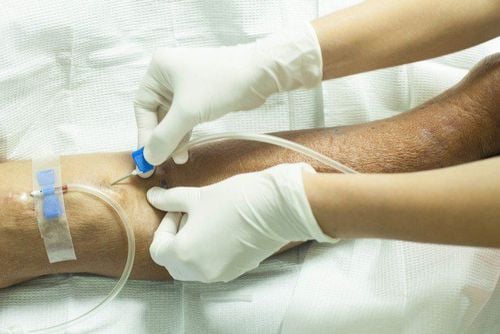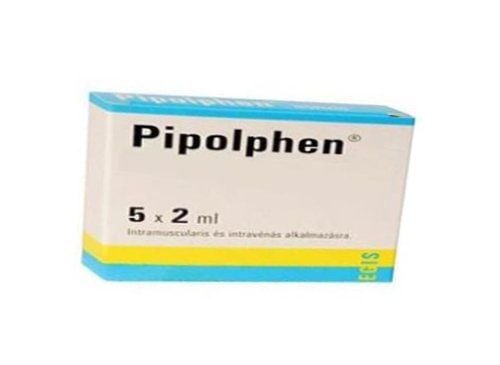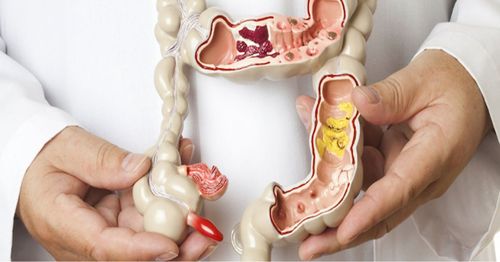This is an automatically translated article.
This article is professionally consulted by resident Doctor Le Thanh Tuan - Gastroenterologist - General Surgery Department - Vinmec Nha Trang International General Hospital.Prophylactic antibiotics in surgery are often indicated for use in certain types of surgery in order to minimize surgical site infection. Prophylactic antibiotic regimens are made based on many different bases such as patient condition, type of antibiotic.
1. What is prophylactic antibiotics?
Prophylactic antibiotics are antibiotics used before surgery in order to minimize infection at the surgical site. Prophylactic antibiotics are indicated in cases of high risk of infection depending on the type of surgery as well as the specific condition of the patient.Prophylactic antibiotic regimens are formulated before surgery, based on the following characteristics:
Bacteria: Potentially infectious agents, sensitivity of bacteria to antibiotics, risk resistant bacteria, prevalence of C. difficile infections in hospitals. Antibiotics: Spectrum of drug action, sensitivity of bacteria to antibiotics, pharmacokinetics (organic permeability, half-life) and cost of the drug. Patient: History of antibiotic allergy, kidney function in case of using multiple antibiotics. However, a prophylactic antibiotic regimen, no matter how effective, is still not a substitute for good surgical technique as well as thoughtful postoperative care.

2. The principles of antibiotic prophylaxis you should know
2.1 Classification of surgery using prophylactic antibiotics Surgery is classified into four categories including clean surgery, clean-contaminated surgery, infected surgery and dirty surgery.If clean surgery is a surgery where the incision does not go through the infected area, does not involve the respiratory tract, digestive system, urinary tract and genitals, then clean surgery is the type of surgery where the incision goes through the above pathways under control and without unusual inflammation. These two types of surgery will be prescribed to use prophylactic antibiotics after surgery.
Infectious surgery is a type of surgery where the incision goes through the area of inflammation, massage the heart after opening the thorax or surgery to treat perforation of the digestive tract. Dirty surgery is a type of surgery where the incision goes through the wound with necrotic tissue, infection due to perforation of hollow viscera, post-operative infection... Moreover, they have a therapeutic role.
2.2 Criteria for choosing antibiotics in surgery The selection of prophylactic antibiotics has many different criteria, the main criteria include:
Antibiotics are effective against the main strains of bacteria that cause infection at the surgical site. Antibiotics with the least toxic effects Antibiotics must not interact with anesthetics Use antibiotics at a reasonable cost 2.3 Ways to use antibiotics in surgery There are four avenues for antibiotic prophylaxis in surgery:
Intravenous infusion: This method is often prescribed by doctors because it works quickly, helping to bring drug levels in the blood and tissue to the fastest standards.

Add more prophylactic antibiotics if the surgery lasts more than three hours and the patient loses a lot of blood during the procedure.
The following is the time and dosage of some prophylactic antibiotics:
| Tên kháng sinh | Liều lượng | Thời gian |
| Cefazolin |
< 120 kg: 2 g ≥ 120 kg: 3 g |
4 giờ/ lần, đối với phẫu thuật tim là 2h/ lần |
| Cefotetan |
< 120 kg: 2 g ≥ 120 kg: 3 g |
Mỗi 6 giờ |
| Clindamycin | 600 mg | Mỗi 6 giờ |
| Ciprofloxacin | 400 mg | Mỗi 8 giờ |
| Gentamycin | 5 mg/kg | Không |
| Metronidazol | 500 mg | Mỗi 12 giờ |
| Vancomycin |
< 70 kg: 1 g 71 - 99 kg: 1,25 g > 100 kg: 1,5 g |
Mỗi 12 giờ |
3. Prophylactic antibiotic regimens in some specific surgeries:
Urological surgery and procedures| Các loại phẫu thuật – thủ thuật | Khuyến cáo dự phòng | Kháng sinh thay thế nếu dị ứng Penicillin |
| Phẫu thuật qua niệu đạo, tán sỏi | Cefazolin | Gentamycin |
| Sinh thiết tuyến tiền liệt qua trực tràng | Cefazolin | Ciprofloxacin hoặc gentamycin |
| Phẫu thuật cắt thận, cắt bỏ tuyến tiền liệt | Cefazolin | Clindamycin |
| Các loại phẫu thuật – thủ thuật | Khuyến cáo dự phòng | Kháng sinh thay thế nếu dị ứng Penicillin |
| Mở xương ức đường giữa, ghép tim, đặt các dụng cụ hỗ trợ thất | Cefazolin | Vancomycin |
| Đặt dụng cụ hỗ trợ thất ngực hở | Cefazolin và vancomycin đến khi đóng ngực | Vancomycin và ciprofloxacin đến khi đóng ngực |
| Các loại phẫu thuật – thủ thuật | Khuyến cáo dự phòng | Kháng sinh thay thế nếu dị ứng Penicillin |
| Thủ thuật mạch chi trên và chi dưới | Cefazolin | Clindamycin hoặc vancomycin |
| Thủ thuật liên quan động mạch chủ bụng hoặc rạch da vùng bẹn | Cefotetan | Vancomycin và gentamycin |
| Các loại phẫu thuật – thủ thuật | Khuyến cáo dự phòng | Kháng sinh thay thế nếu dị ứng Penicillin |
| Cắt thùy phổi, cắt phổi, mở ngực, nội soi lồng ngực hỗ trợ video | Cefazolin | Clindamycin |
| Các phẫu thuật thực quản | Cefotetan | Clindamycin |
| Các loại phẫu thuật – thủ thuật | Khuyến cáo dự phòng | Kháng sinh thay thế nếu dị ứng Penicillin |
| Mở hộp sọ, đặt dẫn lưu dịch não tủy, cấy bơm dưới mạc tủy, mở cung sau đốt sống | Cefazolin | Clindamycin |
| Gắn đốt sống | Cefazolin | Clindamycin hoặc vancomycin |
| Các thủ thuật qua xương bướm | Ceftriaxone | Moxifloxacin 400mg trong 60 phút |
| Các loại phẫu thuật – thủ thuật | Khuyến cáo dự phòng | Kháng sinh thay thế nếu dị ứng Penicillin |
| Mở cung sau đốt sống | Cefazolin | Clindamycin |
| Thay khớp toàn bộ | Cefazolin | Vancomycin |
| Cố định bên trong, nắn xương gãy bên ngoài | Cefazolin | Clindamycin hoặc vancomycin |
| Cắt cụt chi dưới | Cefotetan | Clindamycin và gentamycin |
| Các loại phẫu thuật – thủ thuật | Khuyến cáo dự phòng | Kháng sinh thay thế nếu dị ứng Penicillin |
| Mổ đẻ Cesarean | Cefazolin | Clindamycin và gentamycin |
| Cắt tử cung (đường âm đạo hoặc bụng) | Cefazolin hoặc cefotetan | Clindamycin và gentamycin |
| Phẫu thuật ung thư | Cefotetan | Clindamycin và gentamycin |
Please dial HOTLINE for more information or register for an appointment HERE. Download MyVinmec app to make appointments faster and to manage your bookings easily.














